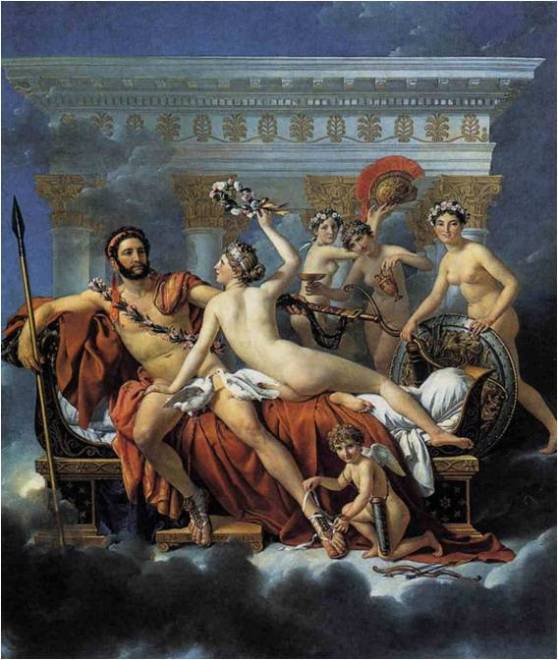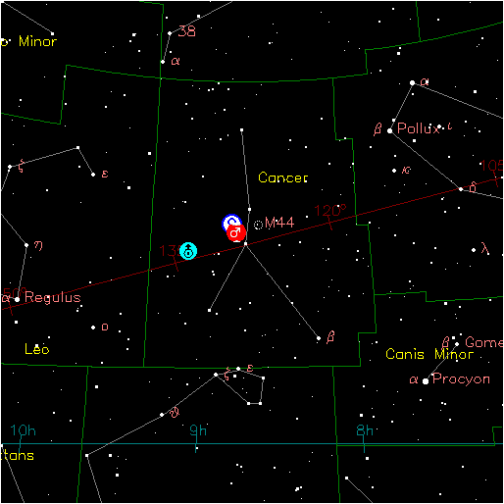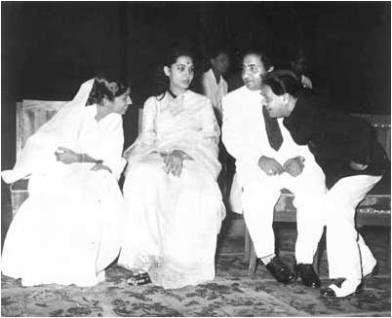This is for those who cherish old Hindi films and their music. The film Kohinoor, B&W, that featured the song in the title here was produced by Republic Film Corporation and directed by S U Sunny. The film is an all time favourite for its entertaining value and wonderful performances and lives in our heart for the evergreen melodies Naushad composed. The film was Censor-certified on Nov 4, 1960 and was the first Hindi film whose songs were issued by the Gramophone Company of India Limited on long play records (3AE 1001) also, apart from their being issued on the usual 78 rpm gramophone records.
The songs were written by Shakeel Badayuni (Aug 3, 1918 – Apr 20, 1970). He is one of the best known names both in Urdu poetry and Hindi film music. He had studied at the Aligarh Muslim University and did a B.A. Shakeel was a scholar and, as recalled by his son Javed, ‘his father was a Muslim Imam who respected all religions and inculcated those values in his son’ (vide Rajiv Vijayakar: 2011 http://www.indianexpress.com/news/the-softspoken-bard/798109/0; accessed 9 Nov 2011). Right from their first Dard (1947), Shakeel and Naushad teamed up to give many films, now so remembered for their soul stirring songs. While writing Do sitaron ka zameen par hai milan aaj ki raat.., did Shakeel get his inspiration from the heavens above? The song sung by Lata Mangeshkar and Mohammed Rafi was picturized on Meena Kumari and Dilip Kumar and is an all time favourite. Dilip Kumar bagged Filmfare’s Best Actor award for Kohinoor in 1961.
Heavenly bodies have always inspired lovers and poets. The fact is that stars do not meet the way they imagine. Stellar collisions in the Milky Way are very rare but close encounters do happen. However, the time scales involved are still astronomical – millions to hundreds of millions of years. Should the song-line be about planetary conjunctions, we have two interesting situations obtaining in 1959 and 1960, those of Venus – Mars and Venus – Jupiter respectively. All the planets are bright and their conjunctions always interest the astrologers. Here we peep in as an astronomer. The closest Venus – Jupiter conjunction occurred in 1960 when on the morning of January 21, separated by about 1º only, the planets presented their best view an hour before the sunrise (07:15 IST at Bombay, now Mumbai). That day all the five visible planets congregated to the west of the Sun within 38º. The planets in question lay in the constellation of Ophiuchus, and above Scorpio, Venus at 1.184 AU and Jupiter at 6.060 AU respectively from the Earth (1 AU, the Astronomical Unit is the mean distance of the Earth from the Sun = 149597870.691 km). Needless to emphasize, the planets would be hovering around each other for days on, before and after they got to their nearest on this date.
However, this conjunction can be ruled out for reasons of chronology. The songs of the film would have been recorded in the studios at different times but were issued on 78 rpm records together as these have consecutive numbers, N53198-53203. That had happened much before Jan 1960. While the actual dates are buried in the archives of the GCIL, we can run a guess. We have shortlisted a few Hindi films that had 78 rpm gramophone records issued with numbers sufficiently close to those of the Kohinoor records from a useful resource compiled by Har Mandir Singh ‘Hamraaz’ – the Hindi Film Geet Kosh (III, 1997):
| Movie | Censor Certificate | Record nos |
| Kohinoor | 04.11.1960 | N 53198-203 |
| Dil Apna aur Preet Parayi | 26.04.1960 | N 53210-11, 53254-5 |
| Dhool ka Phool | 03.12.1959 | N 53197, 53107-9 |
| Zimbo ki Beti | 07.11.1959 | N 53215-6 |
| Fashionable Wife | 05.11.1959 | N 53192-5, 53217 |
| Chacha Zindabad | 18.09.1959 | N 53081, 53196 |
As the immediate certification was that of Chacha Zindabad, the Kohinoor records would have been made some time prior to its date. Assuming six months as average time of production of a film, we can consider the period Apr-Jul 1959 as roughly the window of our interest. If the Kohinoor recordings belong to this period, knowing how hard and for weeks on Naushad and Shakeel would work to give a song a form, Shakeel’s creation might belong to Mar – Jun 1959. We have made a check of the conjunctions during this period. We find Mars – Venus in their closest conjunction within 1º of each other on June 15, 1959 in an evening sky (sunset at Mumbai 19:15 IST). The planets were in the constellation of Cancer, very near the beehive star cluster Praesepe (M44). A few degrees east of the pair stood Uranus but naked eye could not view it. Venus was then near its greatest solar elongation and so the planets stayed high up for a couple of hours after the sunset. In terms of its physical distance from the Earth, Venus was at 0.768 AU and Mars at 2.221 AU. Being closer to the Earth compared to where it would be in its 1960 conjunction with Jupiter, Venus would have shone very bright in Jun 1959.
Mars désarmé par Vénus (Mars Being Disarmed by Venus and the Three Graces), by Jacques-Louis David, 1824. (Musées royaux des Beaux-Arts de Belgique, Brussels; picture: Wikimedia Commons)
Mars is god of war, Venus the goddess of love. A Venus-Mars conjunction makes a better sense, more so in the context here. Now, mid-June is Monsoon time in Mumbai. Who would care to look up the sky? However, in the communities where planetary positions have a say in daily life, to be aware of them is not uncommon. May be, Shakeel knew of it, if not from almanacs, from the circle he moved in. In India, both the planets are male. Men are from Mars and women are from Venus means it elsewhere. Is the male factor a hitch? Not really when Venus in Persian is Naheed, and Zuhra in Arabic, both feminine and symbolize female power. Recall the great love affair between Mars and Venus so celebrated in the arts; see, for example the 1824 painting Mars désarmé par Vénus by the French painter Jacques-Louis David (1748-1825), his last great artwork. Venus is a Roman goddess, also personified as the Greek goddess Aphrodite, the Babylonian Ishtar and the Sumerian Inanna, etc.
The sky over Mumbai, Jun 15, 1959, 13:45 UT sunset time; aim point is RA: 8h 39m 39s Dec: + 17°30’26” (45º field; generated from John Walker’s Your Sky)
To be fair, the assumption that the Mars – Venus conjunction inspired Shakeel to write the Do sitaron ka…song can be termed far-fetched. We have amused ourselves just in case it is not. It is as well that the poet wrote the poetry much earlier and used it for Kohinoor.
http://www.mid-day.com/specials/2010/aug/020810-mohammad-rafi-photo-album.htm Lata Mangeshkar (extreme left), Mohd Rafi and Shakeel Badayuni (extreme right).
Some of the pictures included here are gratefully adopted from a few websites, appropriately credited.
Postscript: After finishing this article on Nov 29, 2011, when I contacted Mr Har Mandir Singh ‘Hamraaz’ for his comments, he replied thus the same day itself: ‘…Just for your information, KOHINOOR songs were recorded in the period 22.09.1959 to 05.10.1959 as per information of HMV’s buried archives which may not be accessible now but I have a part of it (xerox copies) with me for posterity’.
*The author is an astrophysicist, formerly with the Indian Institute of Astrophysics.




Shailendra Diwan said:
Dear Prof. Kapoor Ji,
I happened to see this article only today and found it very interesting. If we consider the recording dates of Kohinoor songs provided by Hamraaz Ji, they are indeed a couple of months after the celestial events you have described occurred. So, it is not impossible that Shakeel sahab may have taken inspiration from those events!
Thank you for this insight into the song.
Best Regards.
– Shailendra Diwan